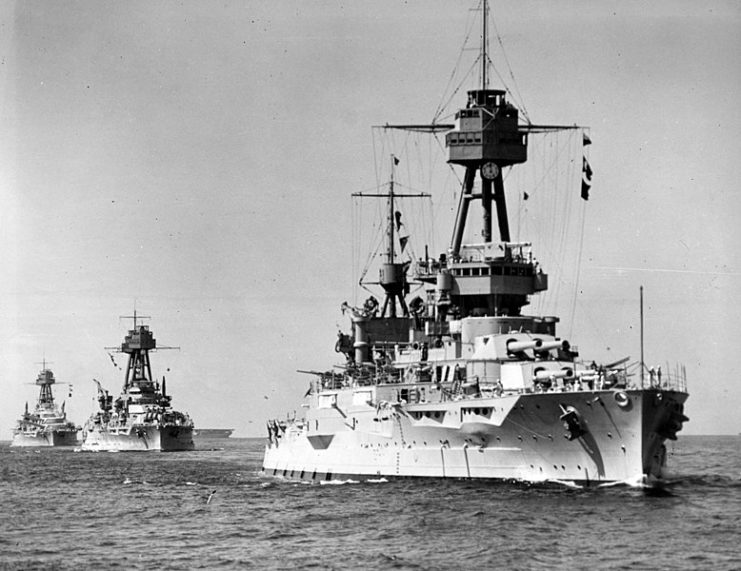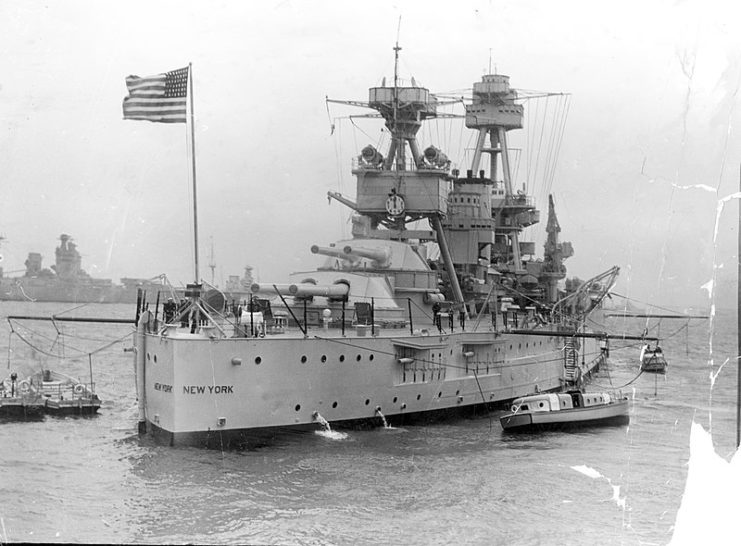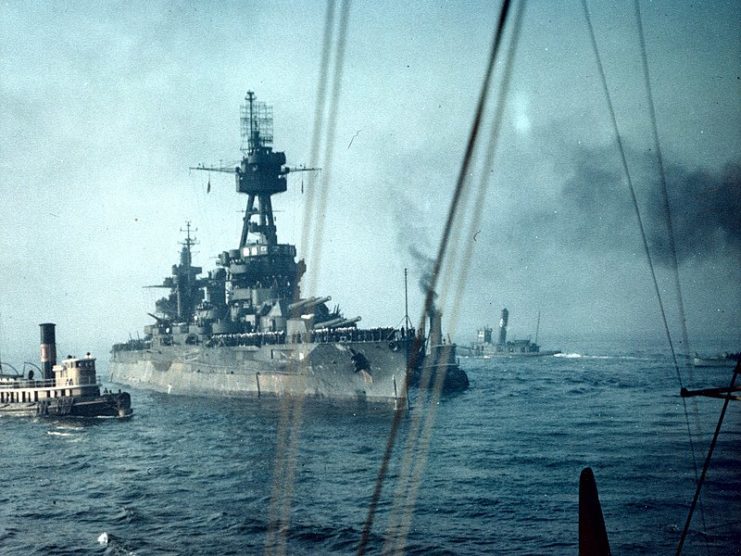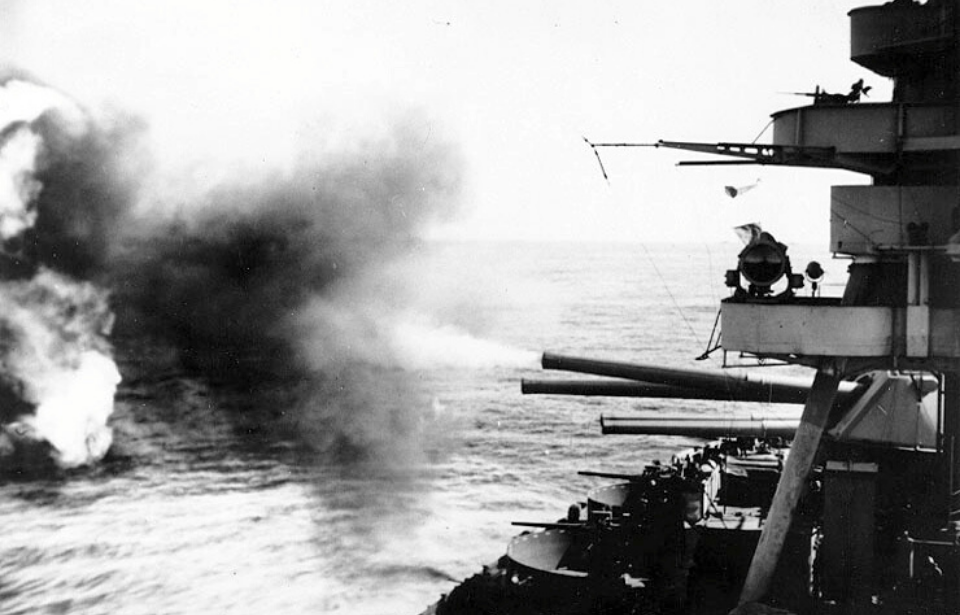The USS New York (BB-34) was a US Navy battleship and the lead vessel of her class. Named after the state of New York, she was designed to be the first vessel to carry a 14-inch/45-caliber gun. She entered service in 1914 and first actively served during the US occupation of Veracruz.
Following more than three years of operations off the East Coast and in the Caribbean, she set sail across the Atlantic Ocean to join the British Grand Fleet, and served as the flagship of US battleships in the 6th Battle Squadron for the remainder of World War I.
The USS New York (BB-34) accidentally collides with a German U-boat

It was during an escort mission that the USS New York first came into contact with a German U-boat. She was leading a fleet of battleships into the Pentland Firth on October 14, 1918 when she was badly damaged in an underwater collision. Two blades broke off of one of her propellors, significantly reducing her speed, and there was damage to the starboard side.
New York‘s commanders opined that the depth of the channel omitted the notion that she may have collided with a shipwreck, and, instead, concluded she must have hit a submerged U-boat. Given the damage the vessel had suffered, officials also concluded that the collision would have been fatal, marking it the only time a German vessel was sunk by Battleship Division Nine during their service with the British Grand Fleet.
Following WWI, it was suggested the German craft was either the SM UB-113 or UB-123. However, both theories were debunked, as UB-113 was sunk by a French gunboat in the Gulf of Gascony, while UB-123 sank in the North Sea Mine Barrage five days after the collision.
New York was also present for one of the most dramatic moments of the war, the German High Seas Fleet’s surrender in the Firth of Forth on November 21, 1918, just days after the Armistice was signed.
Service during the interwar period

By 1919, the USS New York had transited through the Panama Canal to the Pacific Ocean, where she was stationed for the next decade and a half. It was during this time that she underwent some serious modernization. Between 1925-27, she received new oil-fired boilers, heavier deck armor, anti-torpedo bulges along her hull and up-to-date gunfire control mechanisms.
By the mid-1930s, New York was transferred to the Atlantic, stopping in England and becoming the US representative to the British Coronation Grand Naval Review. She remained actively employed as a training ship until she was employed in the Second World War.
The USS New York (BB-34) during the Second World War

The USS New York was part of Neutrality Patrol operations in the Atlantic at the opening of World War II. As the US drew closer to conflict in 1941, she was employed to help with the Allied Occupation of Iceland and in escorting convoys. When America did become a combatant, she continued her convoy activities.
In November 1942, New York participated in the Allied invasion of North Africa, and provided gunfire support for the landings at the port of Safi, in Morocco. She also spent 1943 and most of the following year conducting escort and training duties.
In February 1945, New York‘s guns provided artillery support and shore bombardment during the Battle of Iwo Jima. She was then deployed off the coast of Okinawa for similar purposes. While participating in the battle, she suffered slight damage from a kamikaze aircraft on April 14, 1945.
Following the end of WWII, New York participated in Operation Magic Carpet, transporting troops back to the US, after which she was part of Navy Day celebrations in New York City.
More from us: Two Aircraft Carriers Were Stationed In the Great Lakes During WWII
New York‘s last activity was as a target during Operation Crossroads in Bikini Atoll in 1946. The tests, Able and Baker, caused her to become far too radioactive. This, along with her age, led the Navy to decommission the vessel, after which she was towed out to sea and sunk off the coast of Pearl Harbor, Hawaii.
